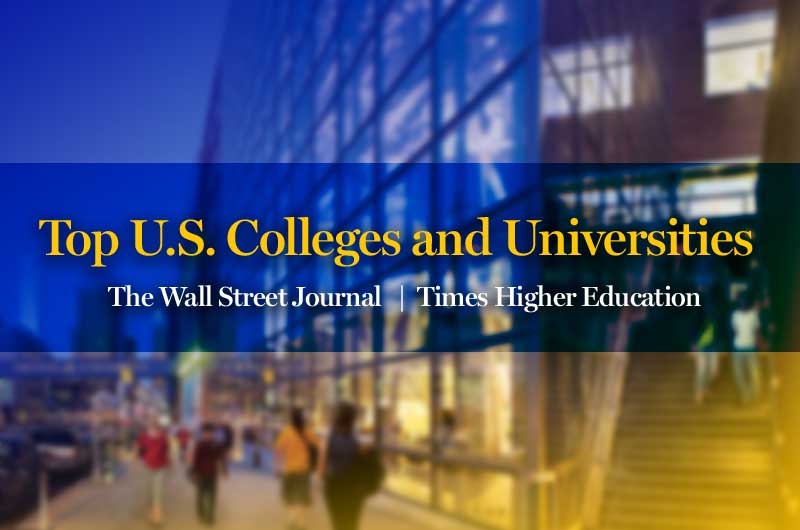Drexel Gains in Innovative School Rankings That Assess Student Outcomes

Drexel University moved nine spots ahead of last year’s rank in the Wall Street Journal and Times Higher Education College Rankings of 2018, placing 84th out of 1,054 U.S. colleges and universities.
As in the 2017 rankings, Drexel made the top 8 percent of ranked institutions in the country this year. The University was included again in the top 400 of 1,102 top international universities by the publications.
New this year was Drexel’s ranking as No. 6 in a list of the students’ top schools for career preparation, and the University’s placement at 38th in a list of U.S. private research universities.
The Wall Street Journal and Times Higher Education’s rankings methodology emphasizes the outcomes of student success, especially after graduation, rather than inputs traditionally used in ranking methodologies such as college placement test scores and acceptance rates. This methodology differs from the categories valued by U.S. News & World Report’s annual “Best Colleges” rankings (in which Drexel also advanced this year, as previously reported in DrexelNow).
“In addition to securing our strong overall standing, the Wall Street Journal/Times Higher Education report also reaffirms the critical value of the Drexel Co-op — placing Drexel among the top 10 schools in the nation for career preparation,” said Drexel President John Fry. “What’s more, we placed 38th overall in the nation among all private research universities.”
The rankings were based on 15 factors across four categories: 40 percent of the overall score came from student outcomes, including post-graduation salaries; 30 percent came from academic resources; 20 percent came from an institution’s engagement with students; and 10 percent came from the environment’s diversity of staff and students. A full breakdown of the methodology can be found here.
Overall, Drexel scored a 70 out of 100. The University scored 25.7 out of 40 in outcomes; 20.3 out of 30 for resources; 17 out of 20 for engagement; and 6.9 out of 10 for environment. It was tied with Denison University and College of the Holy Cross in its ranking at number 84. Drexel placed higher than local universities such as Villanova University (120) and Pennsylvania State University (125).
A survey conducted as part of the rankings asked students to answer questions on a scale of zero to 10, with 10 being the strongest agreement. Respondents gave the University 9.4 out of 10 for career preparation, in which students agreed that Drexel was helpful in securing internships. The University received 8.5 out of 10 from students asked if they would still choose Drexel if they could start their college career over and 8.2 out of 10 for students who said it provided an inspirational and motivating environment.
In the rankings for international colleges and universities, Drexel scored in the 351–400 range out of 1,102 universities (the exact ranking was only available for institutions in the top 200). The rankings were influenced by a variety of factors, including research and teaching reputation and international co-authorship, staff and students.
President John Fry said the University’s rankings in The Wall Street Journal and Times Higher Education lists show that Drexel is on target as a modern urban research university to prepare students for their life after graduation.
In This Article
Drexel News is produced by
University Marketing and Communications.

